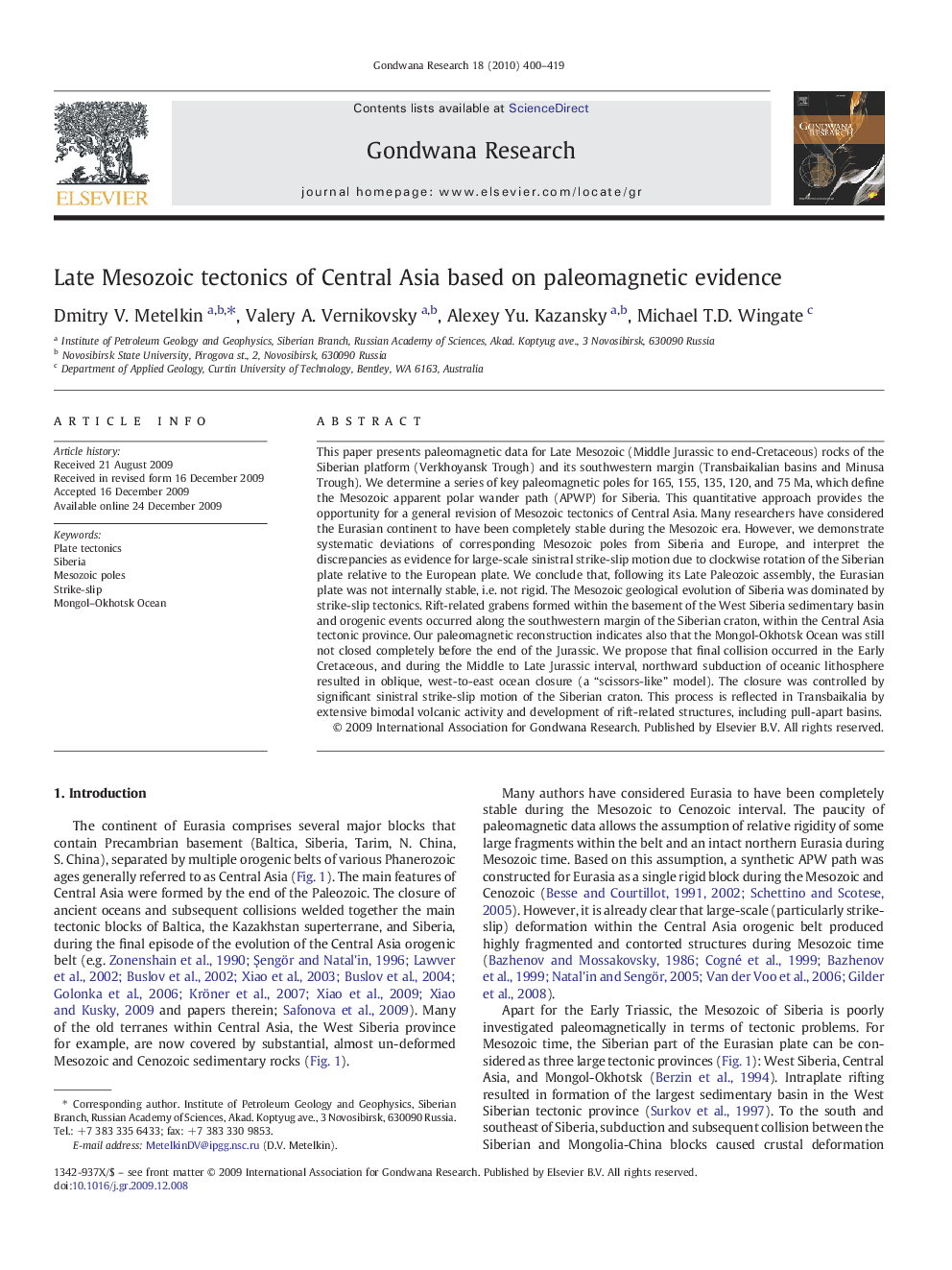| کد مقاله | کد نشریه | سال انتشار | مقاله انگلیسی | نسخه تمام متن |
|---|---|---|---|---|
| 4727066 | 1640148 | 2010 | 20 صفحه PDF | دانلود رایگان |

This paper presents paleomagnetic data for Late Mesozoic (Middle Jurassic to end-Cretaceous) rocks of the Siberian platform (Verkhoyansk Trough) and its southwestern margin (Transbaikalian basins and Minusa Trough). We determine a series of key paleomagnetic poles for 165, 155, 135, 120, and 75 Ma, which define the Mesozoic apparent polar wander path (APWP) for Siberia. This quantitative approach provides the opportunity for a general revision of Mesozoic tectonics of Central Asia. Many researchers have considered the Eurasian continent to have been completely stable during the Mesozoic era. However, we demonstrate systematic deviations of corresponding Mesozoic poles from Siberia and Europe, and interpret the discrepancies as evidence for large-scale sinistral strike-slip motion due to clockwise rotation of the Siberian plate relative to the European plate. We conclude that, following its Late Paleozoic assembly, the Eurasian plate was not internally stable, i.e. not rigid. The Mesozoic geological evolution of Siberia was dominated by strike-slip tectonics. Rift-related grabens formed within the basement of the West Siberia sedimentary basin and orogenic events occurred along the southwestern margin of the Siberian craton, within the Central Asia tectonic province. Our paleomagnetic reconstruction indicates also that the Mongol-Okhotsk Ocean was still not closed completely before the end of the Jurassic. We propose that final collision occurred in the Early Cretaceous, and during the Middle to Late Jurassic interval, northward subduction of oceanic lithosphere resulted in oblique, west-to-east ocean closure (a “scissors-like” model). The closure was controlled by significant sinistral strike-slip motion of the Siberian craton. This process is reflected in Transbaikalia by extensive bimodal volcanic activity and development of rift-related structures, including pull-apart basins.
Journal: Gondwana Research - Volume 18, Issues 2–3, September 2010, Pages 400–419